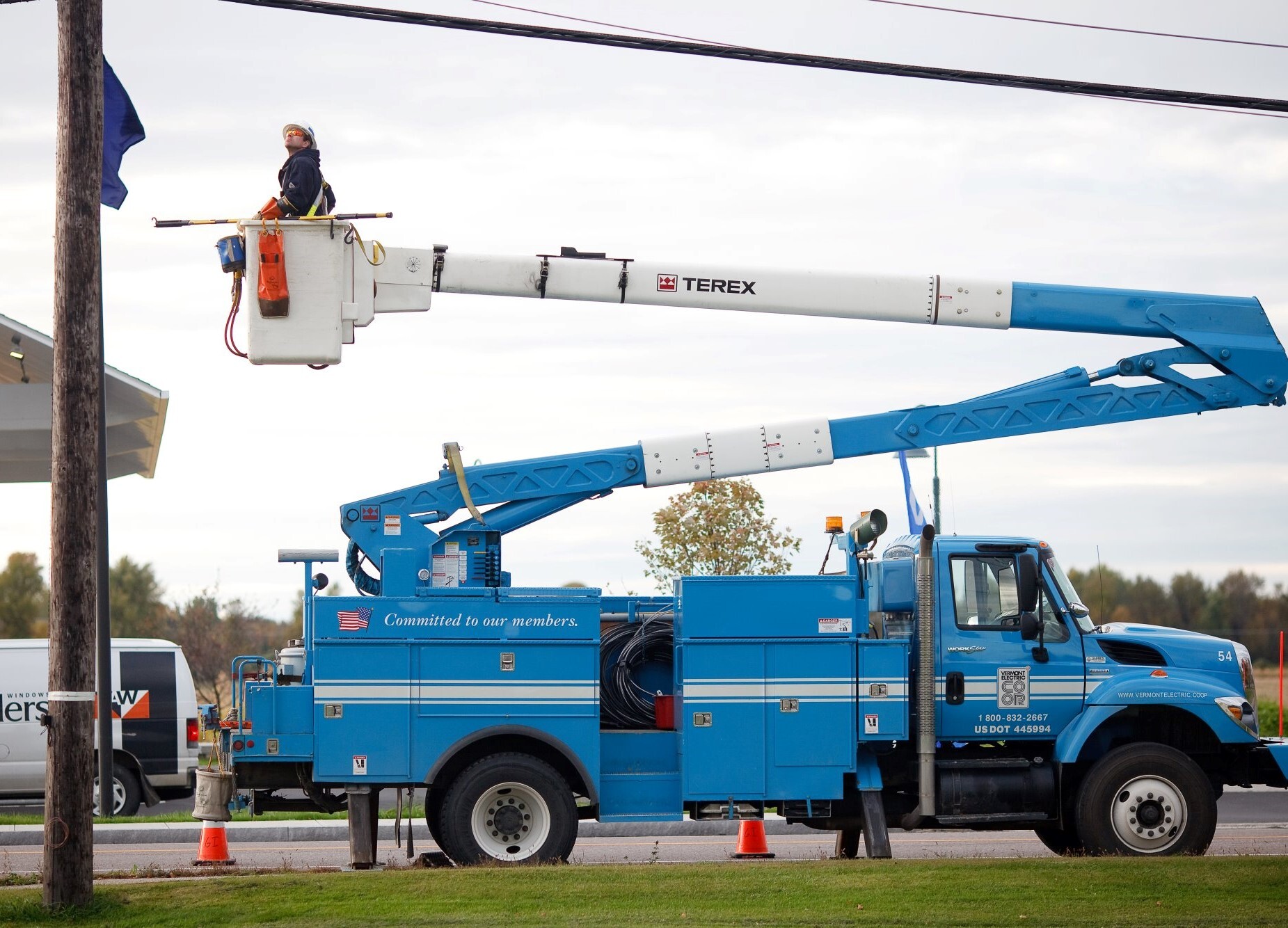Overhead, or Underground: the Ongoing Balancing Act

“Why don’t you bury utility lines more often than you already do?”
That’s a question we often get from VEC members, particularly after an outage event like the storm over Christmas 2022. The answer is not as straightforward as it might seem.
VEC does have an ongoing priority of strategically undergrounding or relocating line away from more forested areas where it makes sense and is practical. While undergrounding lines is not always possible due to ledge rock or other obstacles and other factors, it is explored during the design phase of many projects.
While the vast majority of our system is above ground, and it would be impractical to bury it all, we continually monitor the relative costs – both up-front and on-going – of burying lines in strategic locations versus putting them overhead. Underground lines are generally three times cheaper on a lifetime cost basis but the upfront costs are often higher, depending on the situation (e.g., number of customers served, ledge, watercourses, contractor availability, amount of vegetation and other factors).
Overall, VEC has increased the amount of new or upgraded lines we are undergrounding. It’s worth noting, and is sometimes overlooked, that when underground lines do require repair or are damaged, outage time and costs can be double, triple, or more relative similar repairs to their overhead counterparts. Sometimes, simply moving a line from forested areas to the roadside reduces outage impact because the lines more readily accessible for improvements and repairs.
Most of VEC’s lines were put into place when Vermont’s mountains and other areas were deforested. It was most economical to run a line from point A to point B. As trees have grown back, they have created challenges.
Cooperatives, especially, are extremely cost-conscious due to the not-for-profit nature of our business model and we carefully consider the relative costs and practicality of various options. Additionally, VEC seeks funding from federal government programs, such as the Infrastructure Jobs and Investment Act, to enhance the resilience of VEC’s system, and that includes undergrounding where it makes sense.
In recent years, VEC has been able to effectively utilize the federal FEMA Mitigation program, which makes federal funds available after severe storms. Several times since 2017, we have been able to obtain FEMA funds after a storm to “harden” our system. In one such project, we installed a protection device to sectionalize a line. In another section we reconductored the bare wire to coated/tree wire, and with a third section created a 2-pole tap to tie into another circuit to provide back-up power. Over the last five years, that particular area of line has suffered from approximately two thirds fewer outages annually.
That is a great success story, and we have been able to do this with many other projects. Meanwhile, as we plan for the future, we continue to monitor the always shifting costs of enhancing our system, all with the goal of bringing safe, reliable electrical service to our members in as cost-effective a manner as possible.